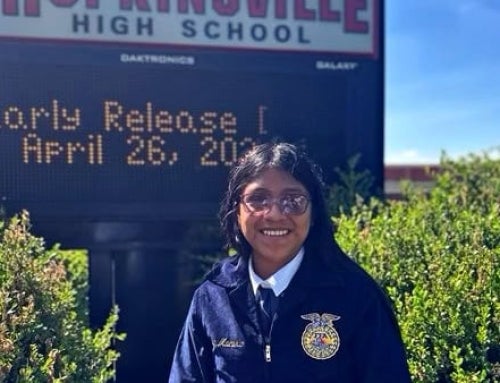No matter how tight-knit your FFA chapter is, conflict is bound to arise occasionally, which can create unwelcome tension and result in an unpleasant group environment.
However, when equipped with the right strategies and tools, you can overcome disagreements respectfully. In the process, you can even cultivate a stronger, more inclusive organization that’s built to last.
“People will always have differing opinions and ways of viewing the world, and it’s not productive to interrogate someone’s identity,” says Brandon Bell, the North America diversity and inclusion lead at Syngenta. “The key is to come together and identify common needs and goals to not only meet in the middle, but also collaborate and work toward the mutual goal.”
Bell, who also serves as the National FFA Organization executive in residence for organizational development and culture, encourages FFA members to view conflicts and differences as opportunities for innovation rather than insurmountable obstacles.
“If all parties are passionate about agriculture, for example, that’s a great place to start,” Bell says. “The focus can then turn from the differences themselves to leveraging those differences in a way that draws more people to FFA. What appeared to be an impediment becomes a catalyst for growth when everyone’s purpose and end goal align. It’s not about compromise; it’s about joining hands and creating community.”
In leadership roles, Bell emphasizes the importance of keeping community at the forefront and making decisions based on what’s best for the group.
He recommends leaders strive to be solution-oriented while remaining collaborative and aiming to meet their community members where they are. This requires thinking more broadly, engaging in respectful dialogue — not debate — and focusing on turning conflict into consensus. “As a leader, you are leading with your values, but you’re serving people who both will and will not share those values,” Bell says. “Because this is the reality, leaders need to be objective and not lean so much into their values that they cannot connect with people who hold different views and beliefs. In other words, you can be authentic and true to yourself while still putting yourself in someone else’s shoes.”
In addition, Bell encourages leaders to acknowledge and be honest about their limitations, biases and imperfections. Self- awareness goes a long way, he says. Without it, Bell says one cannot be a strong, effective leader.
“There are very few people who won’t meet you halfway when you are genuine, truthful and humble,” Bell says. “You don’t have to have all the answers, but you do have to know yourself well enough to identify and own your shortcomings.”












